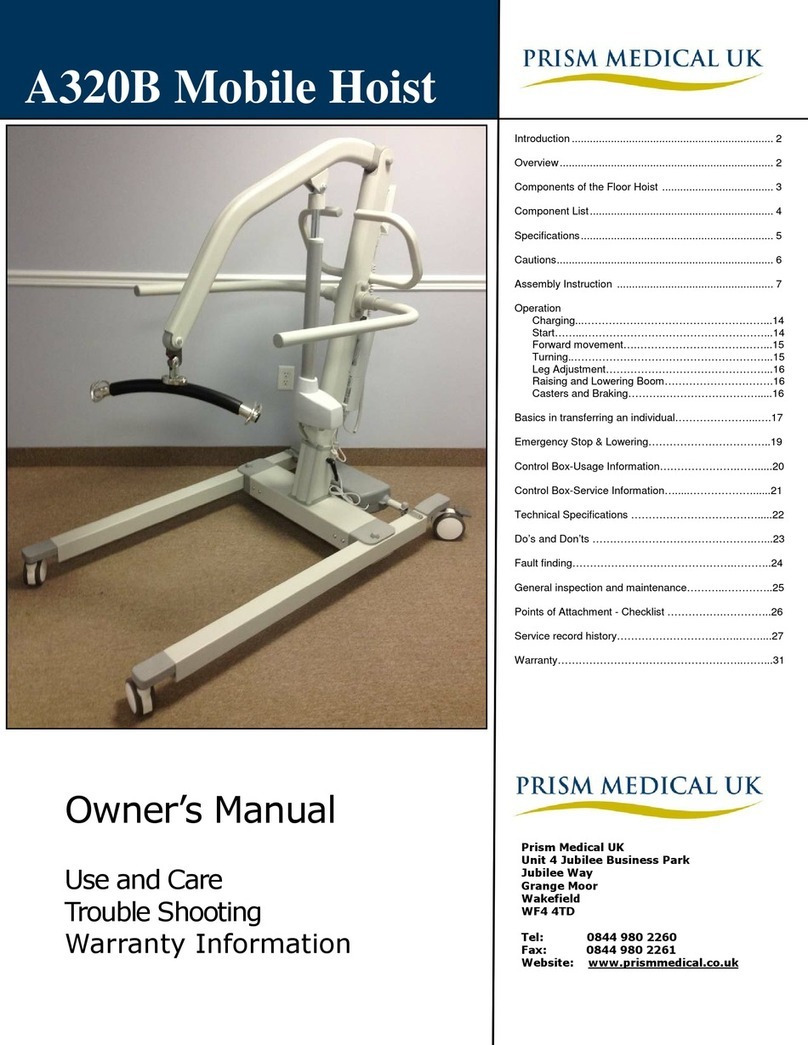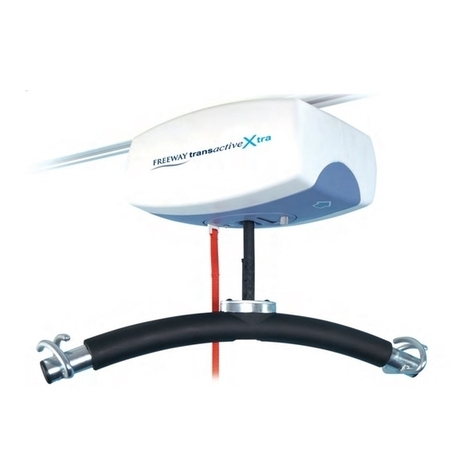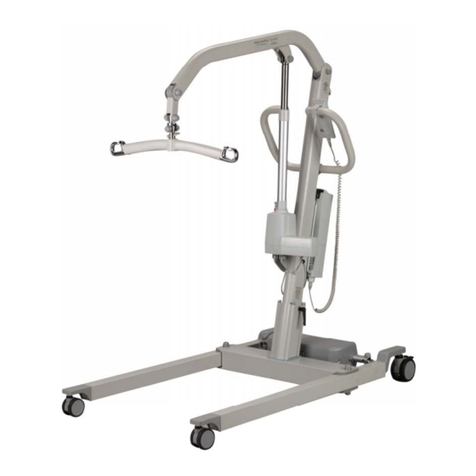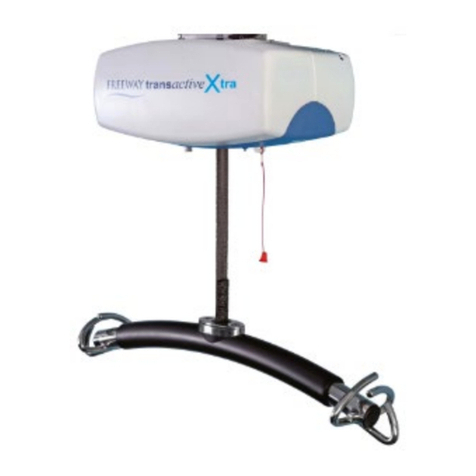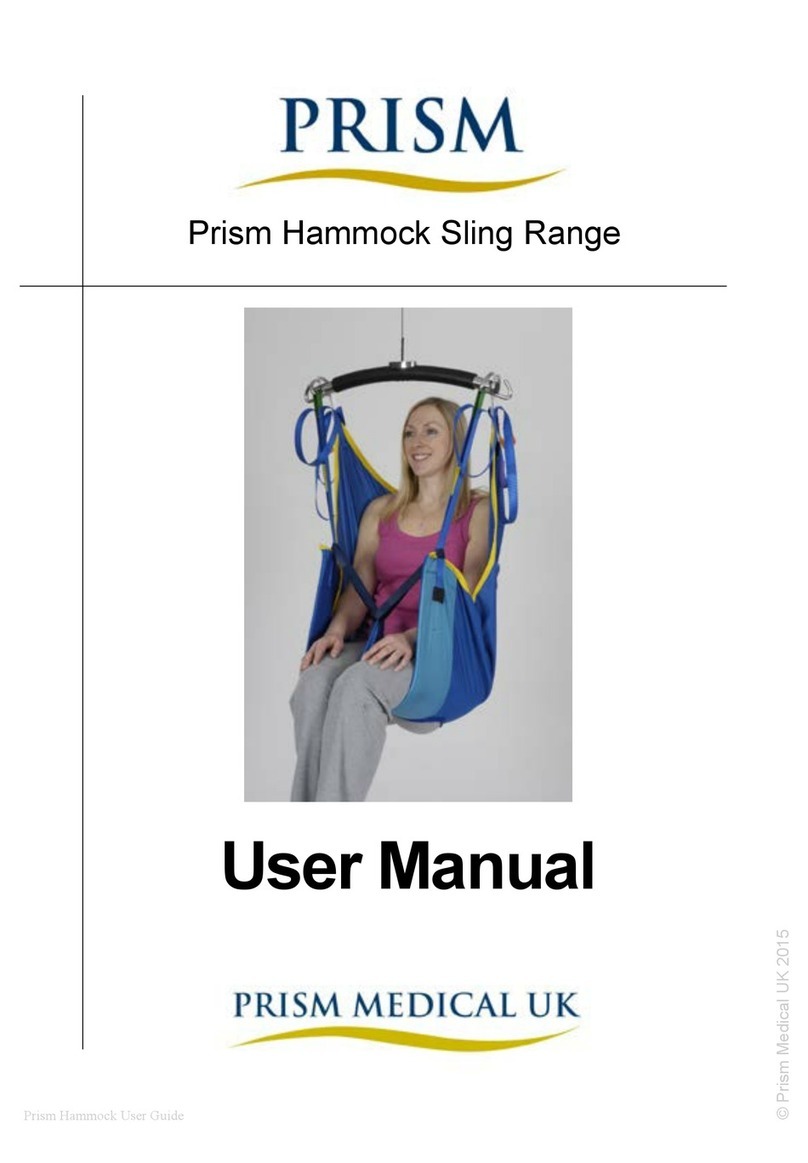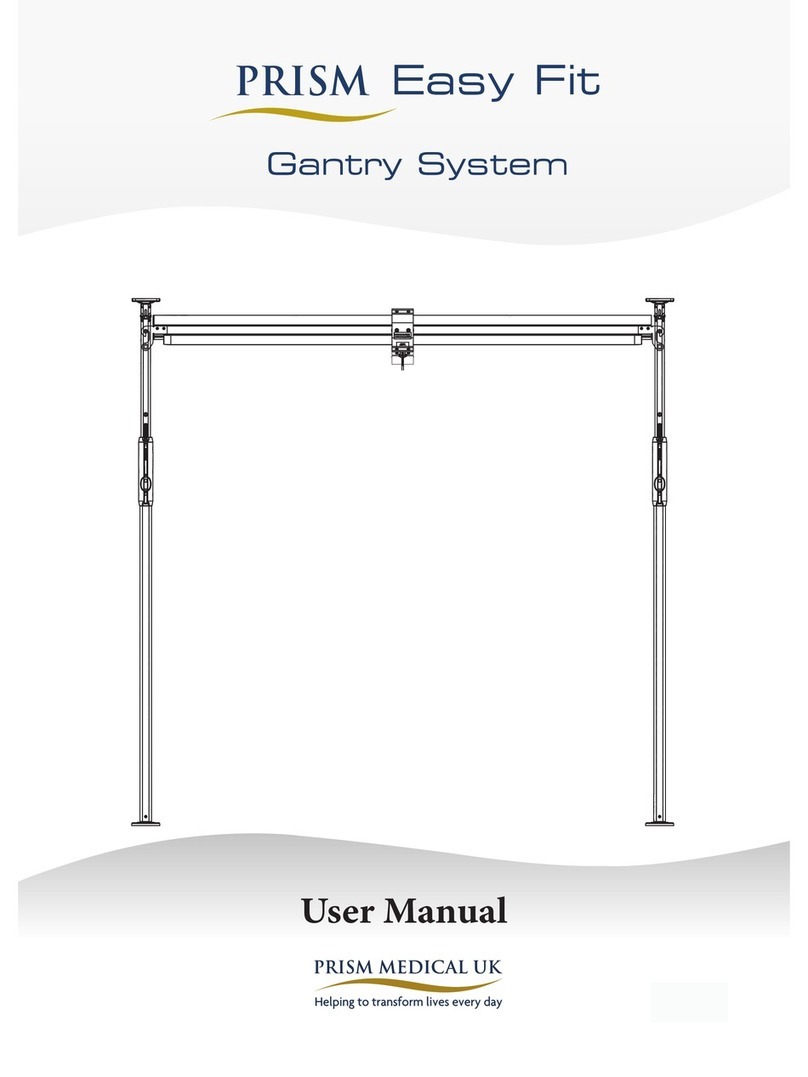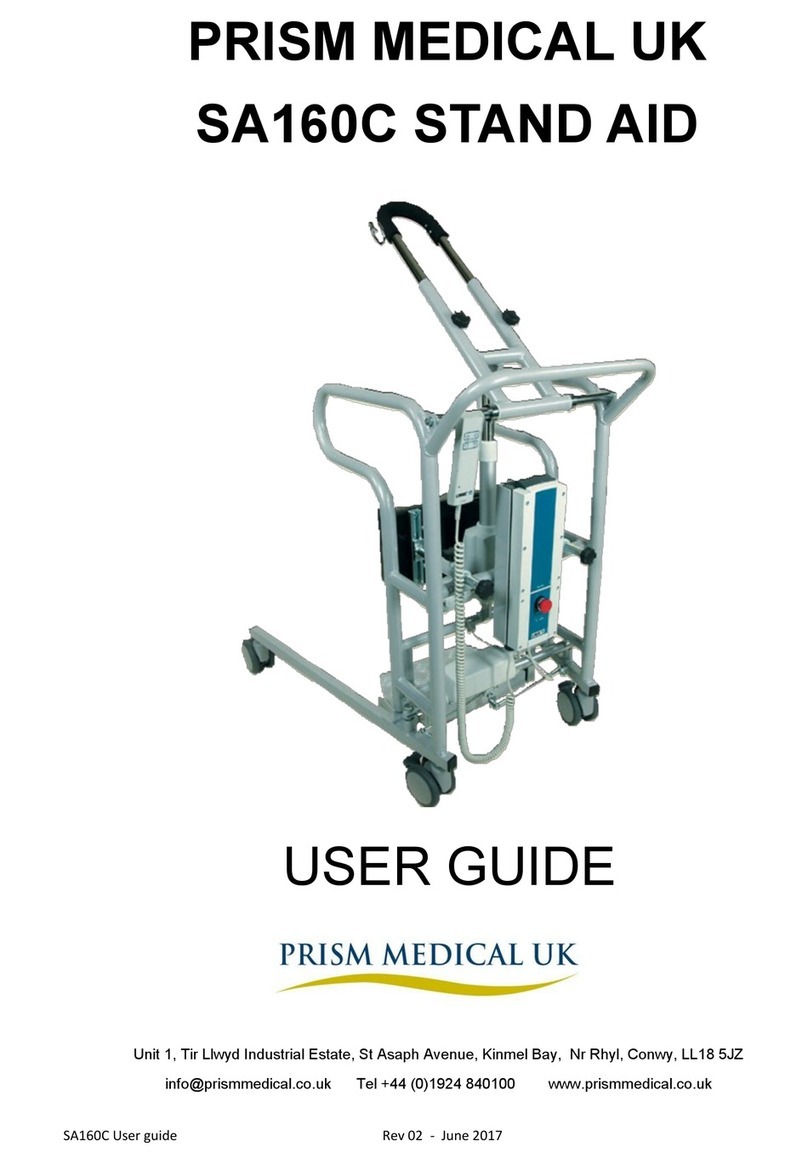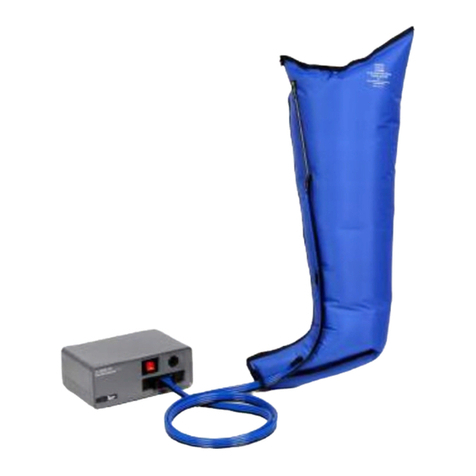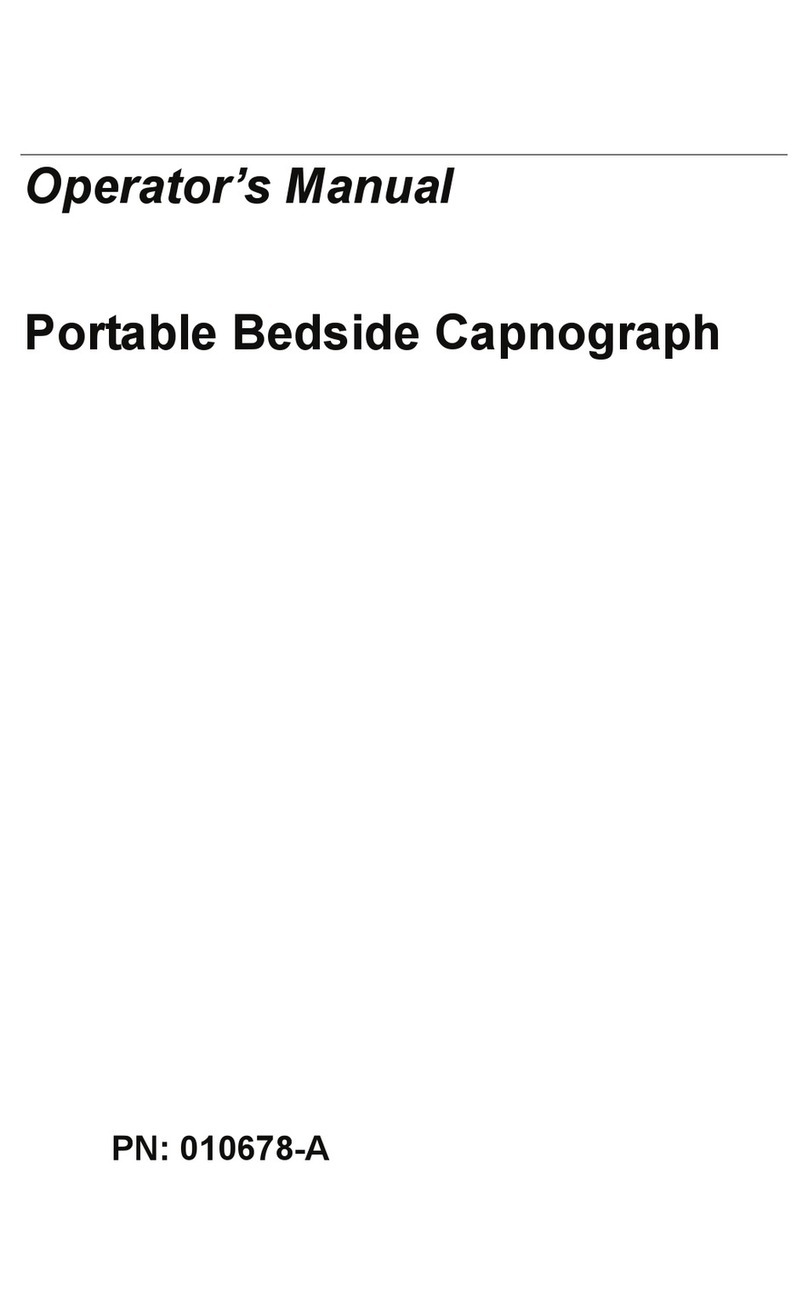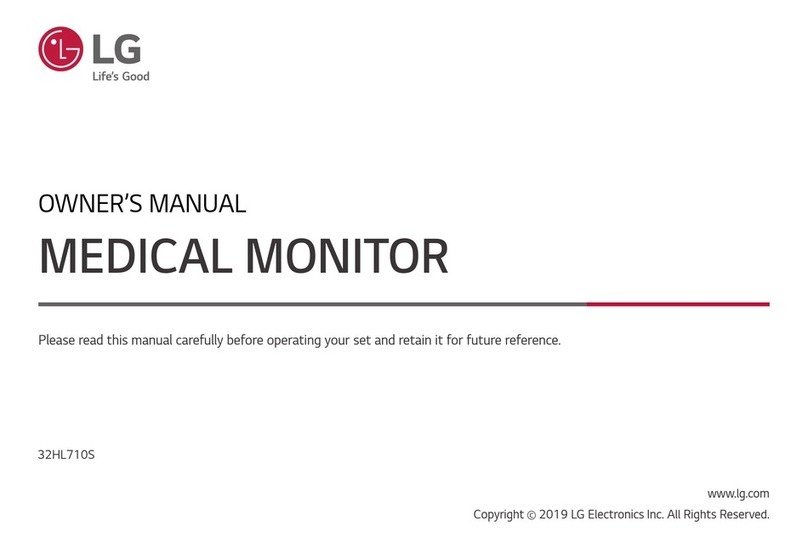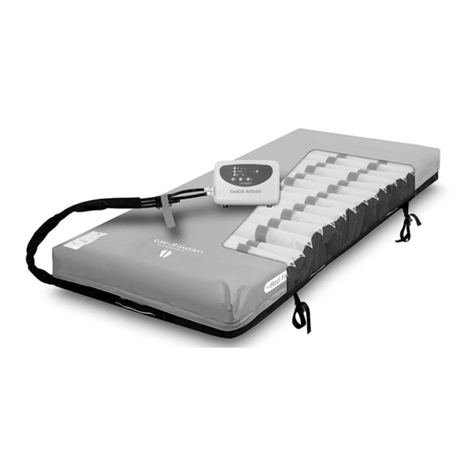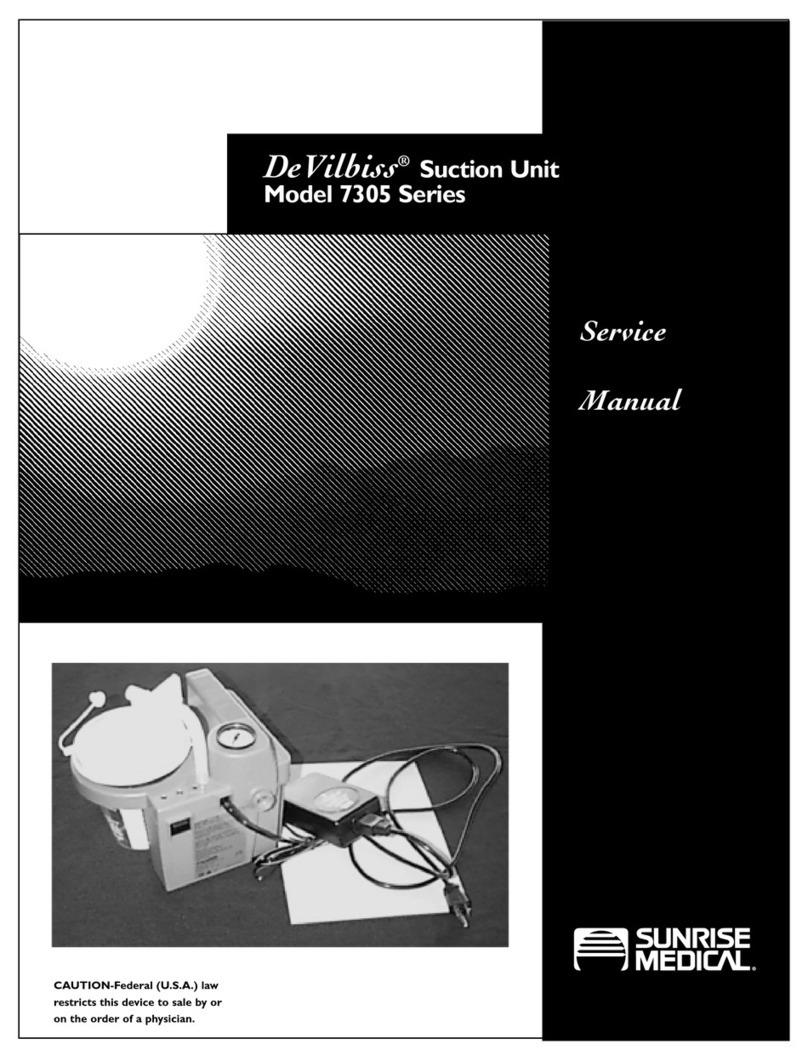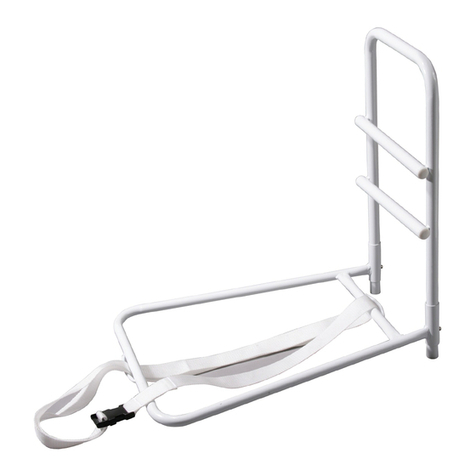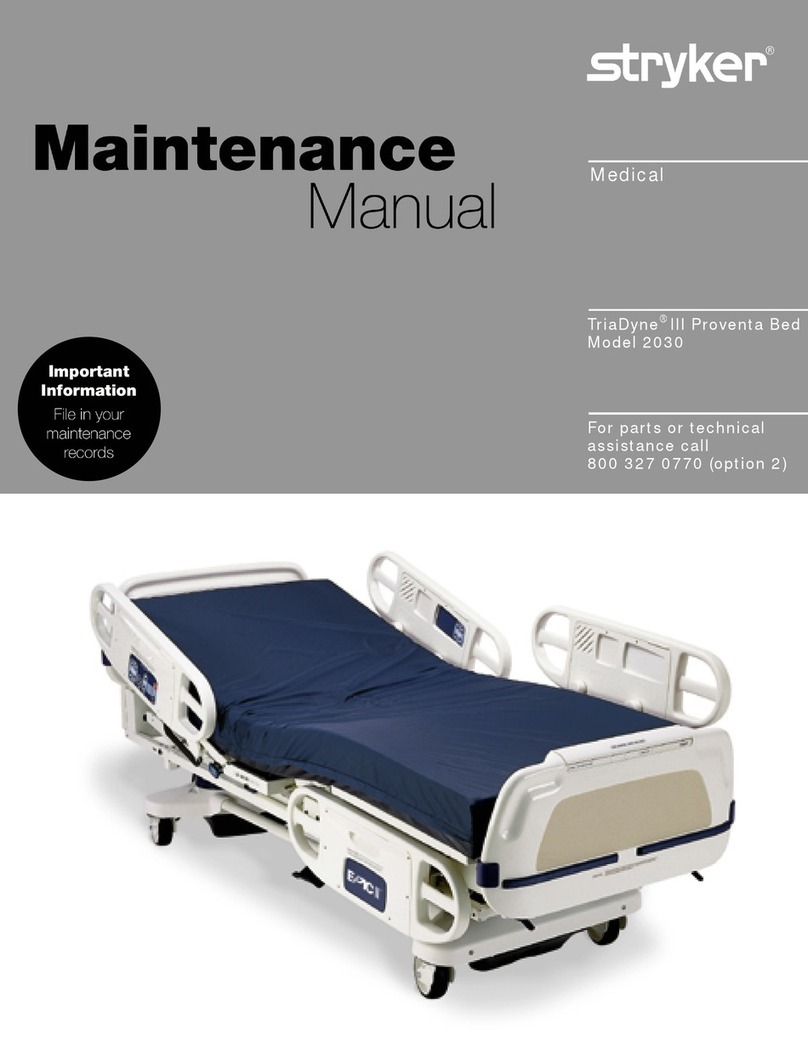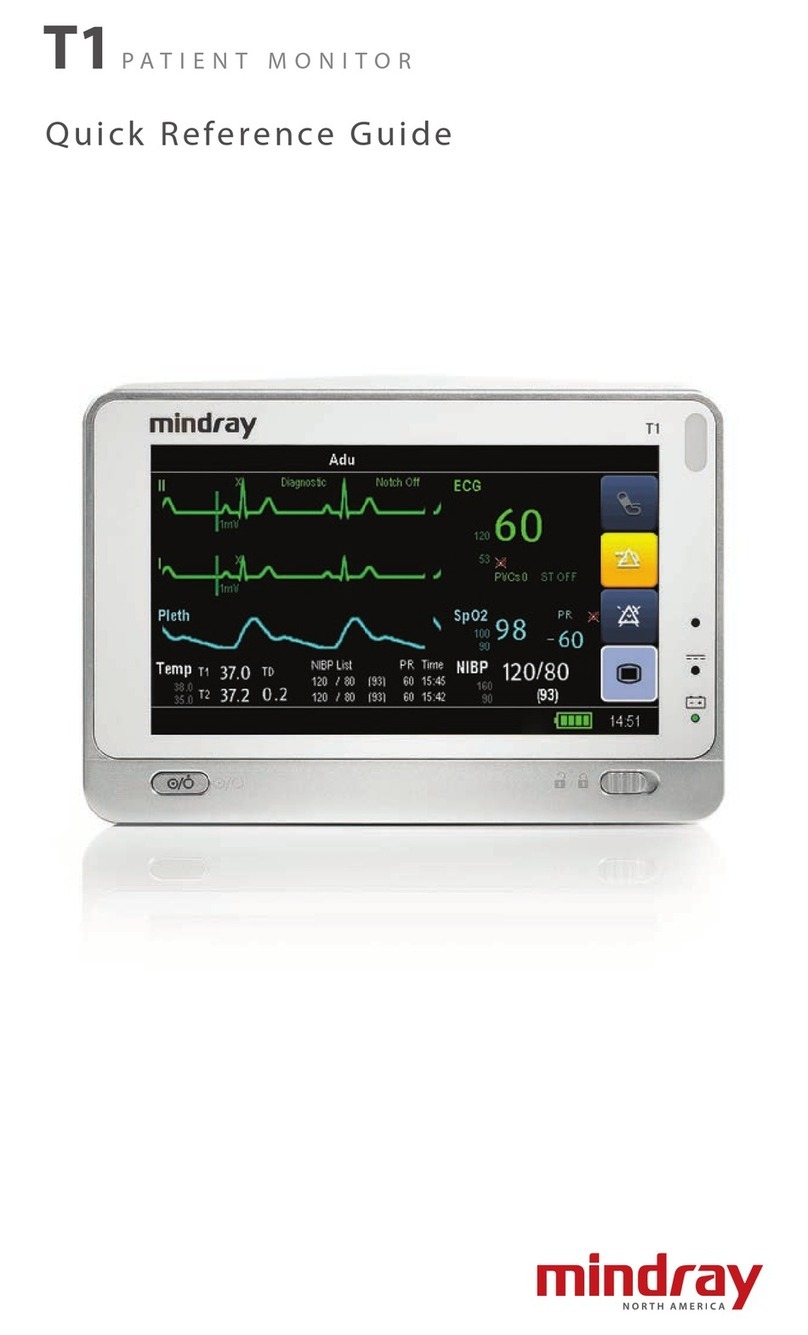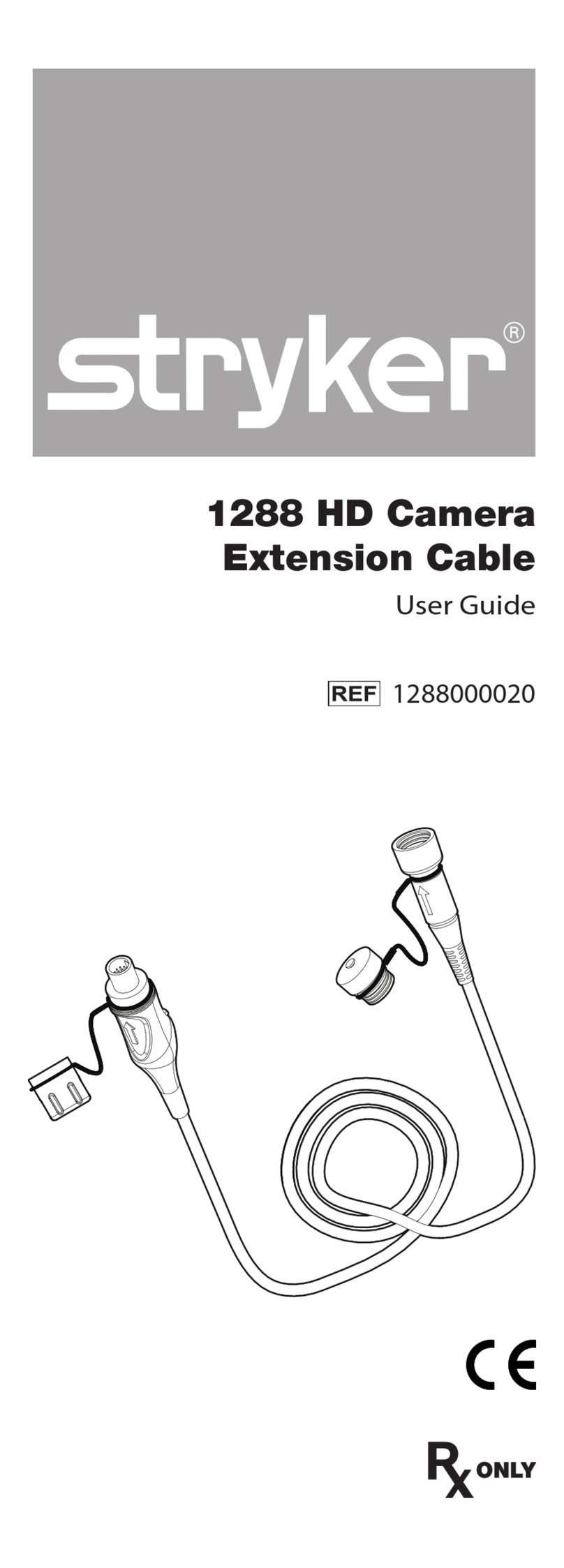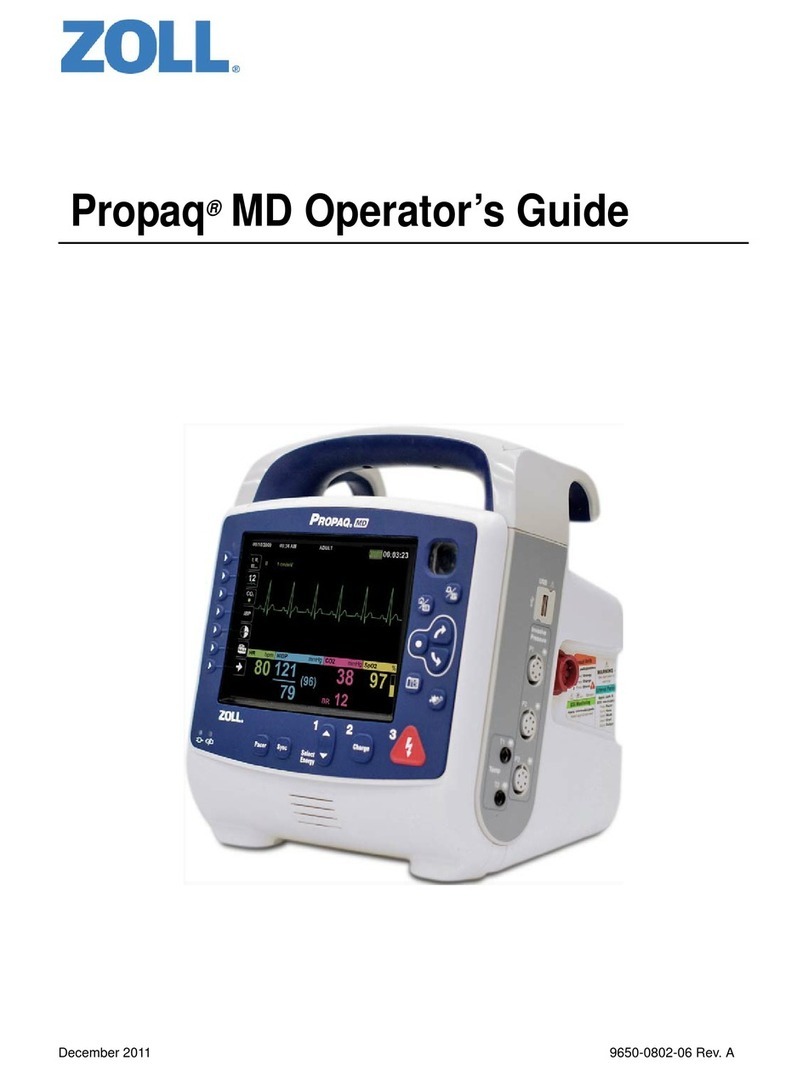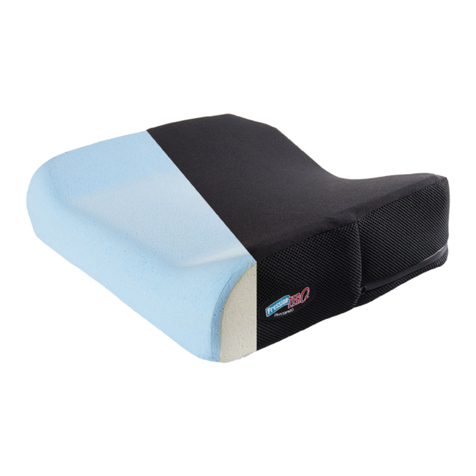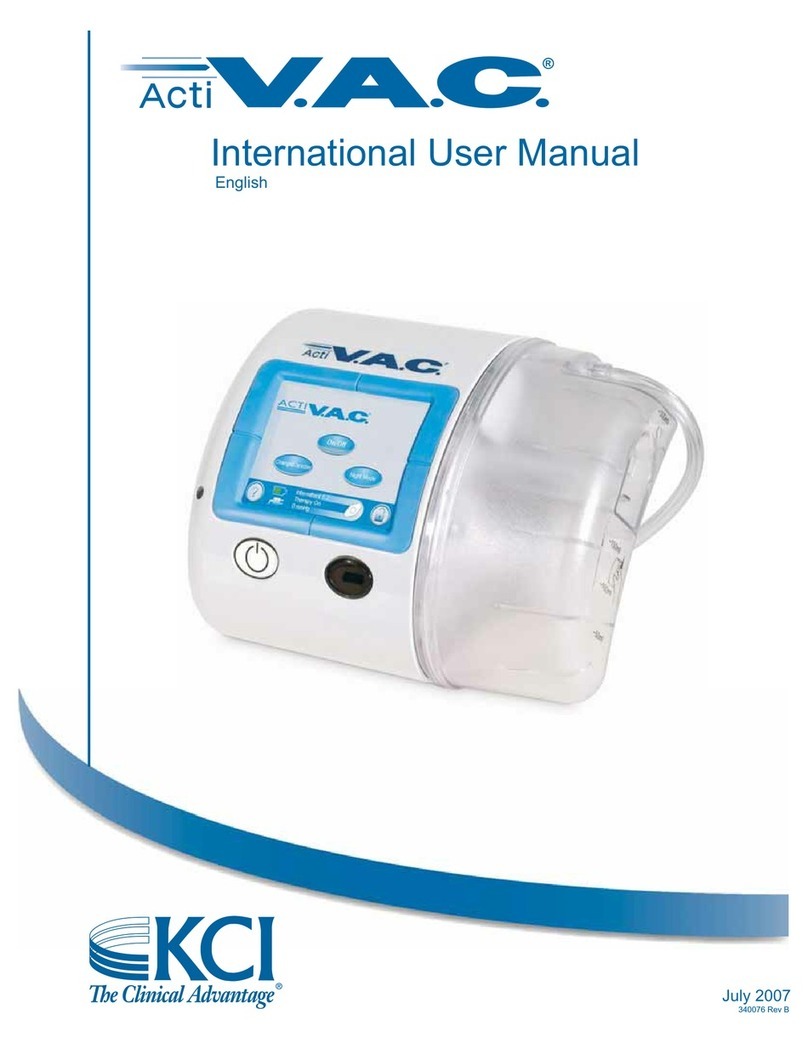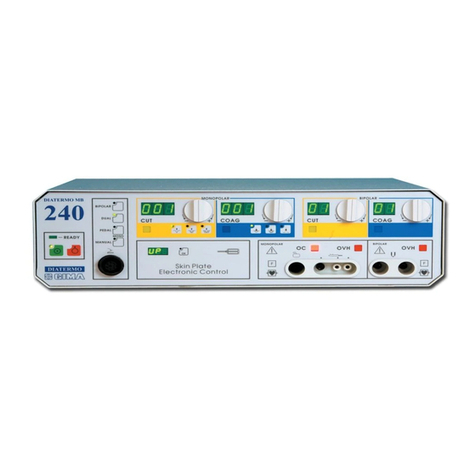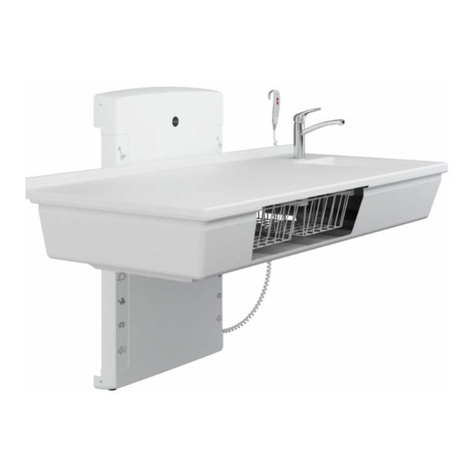PL2 - Prism Dual Access User Guide - Doc 002 - Rev 04/2010
© Prism Medical UK 2010
Prism Dual Access Sling
Application
The Dual Access Sling is designed to be used rom a sitting position with either a
patient li ting hoist or a Standaid. The sling gives access to remove and re it lower
garments or toileting trans ers whilst the client is supported by the sling. This sling
can make toileting less time consuming than i per orming the manoeuvre with a
Universal Sling however the person must have the ability to maintain a 90 degree
position between their emur and pelvic girdle.
Please read all instructions in full, including
the back page, before you pro
Sling Inspection
All Prism slings are manu actured to meet and exceed the requirements o
BS EN 10535:2006. Slings should be inspected prior to use and a ter washing.
Damaged or badly worn slings should be discarded.. The label on the sling contains
vital in ormation to identi y the sling—i any part o the label becomes illegible, then
it must be removed rom service and replaced.
The sling should be visually inspected with regard to the ollowing items:-
•
Any signs o damage (i.e. Cuts, rays, tears, burns) to the sling straps.
•
Any signs o stitching becoming undone on any part o the sling.
•
Any signs o the abric being stretched, tearing or undue wear.
•
Any signs o discolouring or bleaching on the material.
•
Is the sling complete? i.e. All straps present, sti eners in place - where
applicable, etc.
•
Label clearly legible.
Compatibility
The issue o sling compatibility with various manu acturers’ hoists has been a con-
cern or speci iers or a number o years, an issue that is compounded by the in-
creased number o companies supplying hoists and slings.
Some hoist/sling manu acturers will state that only slings manu actured by them can
be used on their hoists and vice versa. This is their policy only and is NOT a legal
requirement. A risk assessment must still be completed even i the same manu ac-
turer o hoist and sling are to be used, and the speci ier simply has to state that the
carry bar is o a similar design and that the sling manu acturer has authorised its
use on it.
A comprehensive list is available separately and your local agent will be able to
provide assistance with compatibility issues.
Maximum Load (Sa e Working Load - S.W.L)
The maximum load or the sling is clearly marked on the label o the sling. The
maximum load will also be displayed on the hoist and any detachable elements o
the hoisting system.
DO NOT exceed the maximum load stated on any of the equipment.








